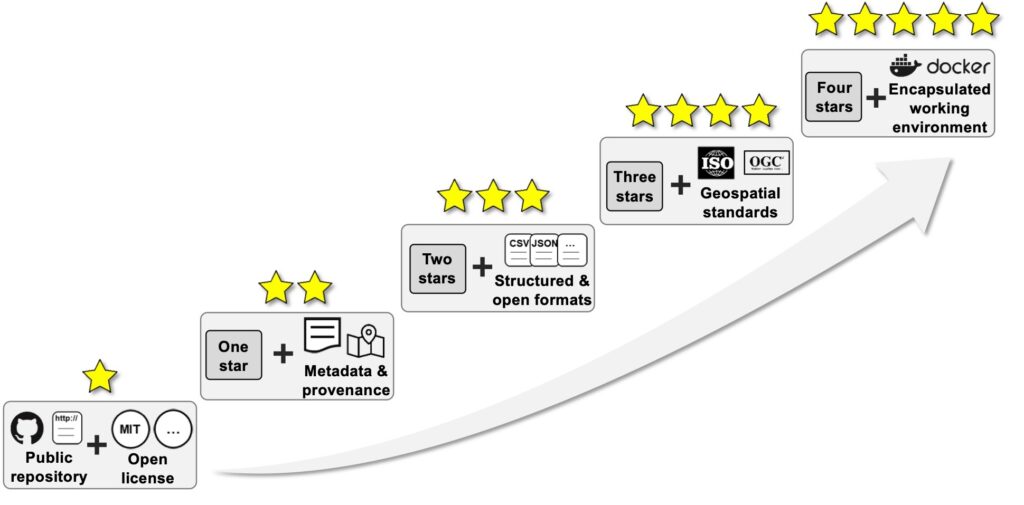Reference: John P. Wilson, Kevin Butler, Song Gao, Yingje Hu, Wenwen Li & Dawn J. Wright (2020) A Five-Star Guide for Achieving Replicability and Reproducibility When Working with GIS Software and Algorithms, Annals of the American Association of Geographers, DOI: 10.1080/24694452.2020.1806026
Abstract: The availability and use of geographic information technologies and data for describing the patterns and processes operating on or near the Earth’s surface have grown substantially during the past fifty years. The number of geographic information systems software packages and algorithms has also grown quickly during this period, fueled by rapid advances in computing and the explosive growth in the availability of digital data describing specific phenomena. Geographic information scientists therefore increasingly find themselves choosing between multiple software suites and algorithms to execute specific analysis, modeling, and visualization tasks in environmental applications today. This is a major challenge because it is often difficult to assess the efficacy of the candidate software platforms and algorithms when used in specific applications and study areas, which often generate different results. The subtleties and issues that characterize the field of geomorphometry are used here to document the need for (1) theoretically based software and algorithms; (2) new methods for the collection of provenance information about the data and code along with application context knowledge; and (3) new protocols for distributing this information and knowledge along with the data and code. This article discusses the progress and enduring challenges connected with these outcomes.
New Protocols for Distributing the Data and Code of Geospatial Research
Here, we propose a five-star practical guide for sharing data and code in geospatial research, modeled after the five-star system offered by Berners-Lee (2009) for publishing linked open data on the Web. Instead of asking researchers to share all pieces of data and code, this five-star guide encourages a simple start of data and code sharing, and researchers can move to a higher level when time and other resources allow.

See more papers on the Forum on Reproducibility and Replicability in Geography.